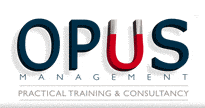
The recent Great Recession caused companies to cut a lot of middle management jobs. The cuts were viewed as necessary by many organizations for them to remain in business. The duties of the middle managers were spread out to the people above and below them.
Now that times are getting better, organizations are feeling the long term effects of this change. There is no longer the large pool of candidates to pull from for leadership positions. The relatively small number of middle management positions makes it even more imperative that the right choice for leadership development is made. Managing the talent pipeline is more critical than ever.
A potential successor to the current leader should undergo an assessment in key areas, including Skill set and Suitability. Can they do the job? And will they enjoy and be good at it? How mobile are they to relocate? Are they willing to go where the jobs are? How keen are they on role enhancement? Are they doing it for personal growth or monetary remuneration?
It is critical for employers to systematically assess job eligibility (experience, education, and skills) along with all the important behavioral suitability factors such as attitudes, motivations, interpersonal skills, interests, work values, and work preferences.
Although most employers would agree on the importance of a comprehensive and systematic approach for succession planning, few companies have the time or expertise to create the necessary integrated technology that will measure and track eligibility and suitability factors, as well as allow for incorporation of multiple data points, including performance results.
Does your company have a talent readiness reporting management system that behaves like an internal job board system filtering and ranking your most eligible, suitable and mobility ready talent for your decision making?
You need an easy way to identify your “diamonds in the rough.” The Harrison Assessment can help you. A 30 minute online questionnaire can review your middle managers and help identify which of them will be most likely to succeed in a leadership role, and more importantly, how you can develop them to achieve success.


